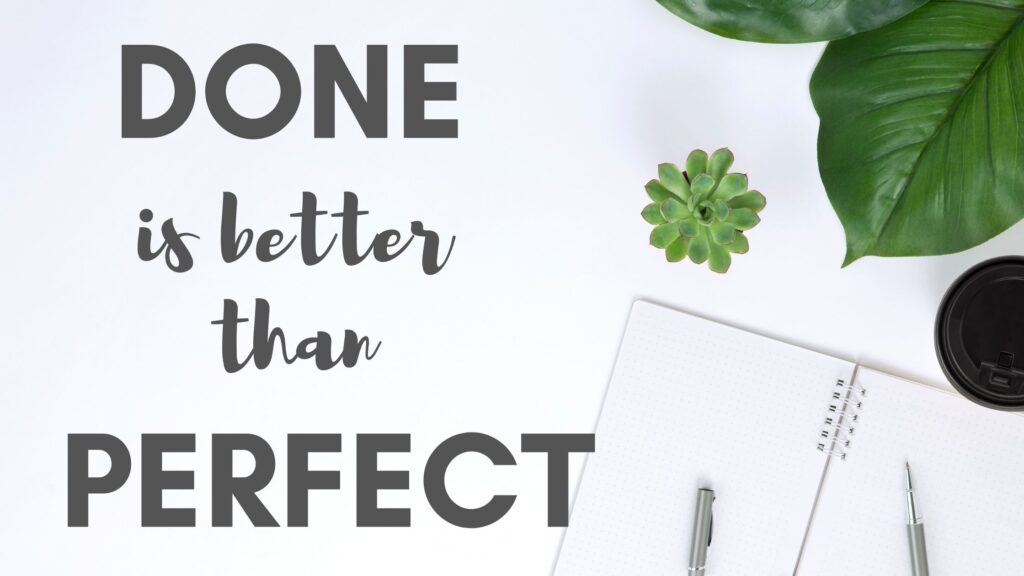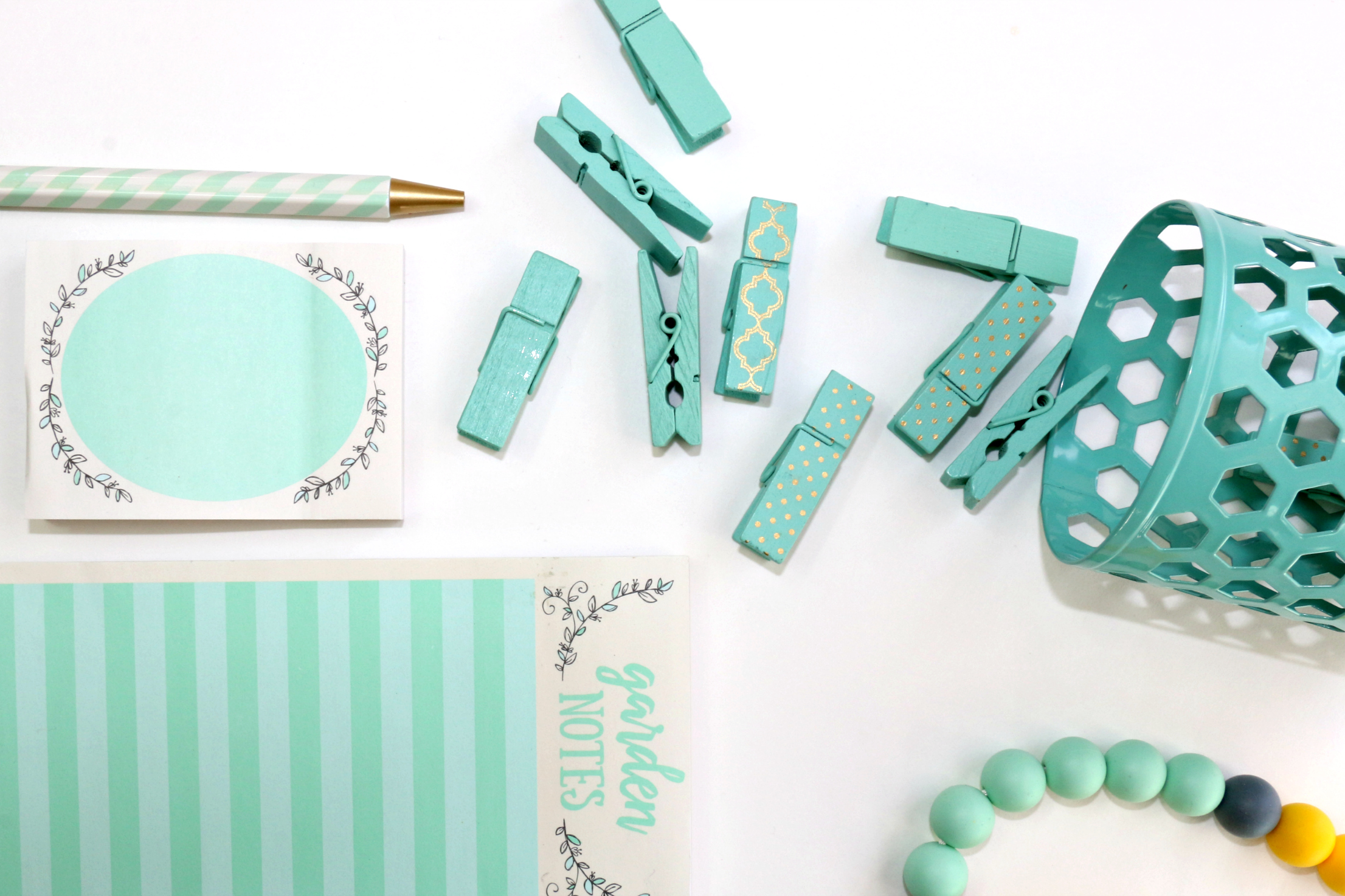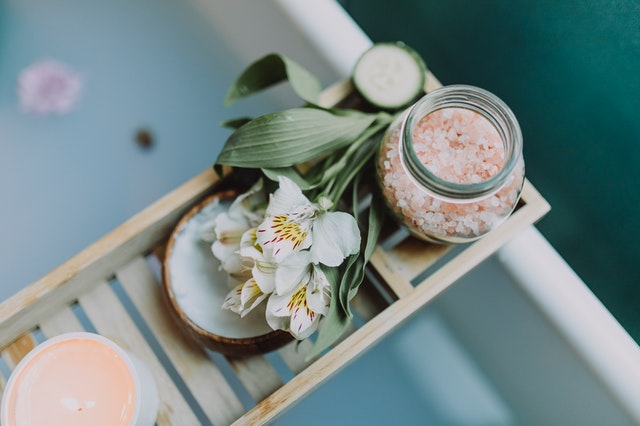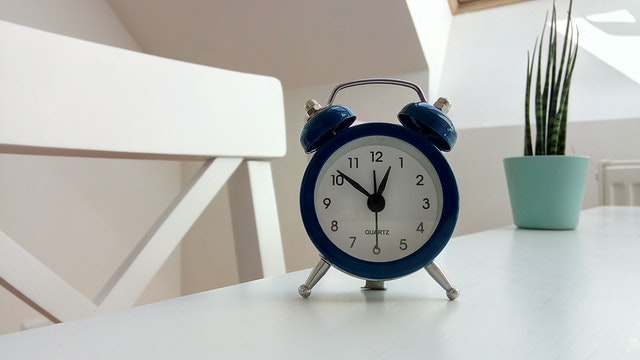16 Quick and Easy Ways to Increase Your Productivity
This post may contain affiliate links, which means I’ll receive a commission if you purchase through my links (at no extra cost to you). Please see my disclosure for more information.
One of my favorite feelings in the entire world is reaching the end of a productive day. I love that feeling of sitting down with a book and a glass of wine or cup of tea, truly enjoying it because I DESERVE IT. I worked hard all day – stayed on top of the to-do list, schooled the kids, kept the house clean, cooked a great dinner, finished a project, stayed off of my phone – so now I get some guilt-free time to sit and relax. It feels amazing!
Today I’m going to share 16 tips to improve your productivity every day so that you, too, can have that feeling of a job well done. When you turn these tips into consistent daily habits, everything feels so much easier. You’ll have time for yourself, and you won’t have to feel guilty about it. You’ll stop some of the overwhelm that comes with all of the tasks that you need to take care of every. single. day. Best of all, you’ll feel so proud that you’ve achieved your goals for each day.
Hopefully a few of the tips on this list inspire you to take action. Just pick one of two of them to start, then, once you get the hang of those, add another and another until you feel like a productivity ninja!
How to be Productive – 16 Quick and Easy Tips!
#1 Make Your Bed
I know, I know… You’re thinking, How on earth will making my bed make me more productive today? It’s my first tip for a reason, though – starting your day with a small victory starts you off in the right direction to have a great day. To be honest, this isn’t the very first thing I do every day. I have my coffee and work for a bit first (mostly because my husband is still in bed when I get up), then I go back up to make my bed. Not only does it feel good to cross something off of my daily to-do list so early in the morning, but it automatically makes my bedroom look clean – and it feels better crawling into an already-made bed at night.
#2 Morning Routine
This is my absolute favorite tip. A morning routine sets the tone for your whole day – if you can do this one thing consistently, I promise you that your days will go more smoothly and you’ll be a more patient mom and human. Unfortunately, there’s a downside to this tip – you have to get up before your kids. I’m sorry!
My morning routine involves some time with just me and my coffee. I get up somewhere between 5 and 5:30, depending on how many times I hit snooze (I’m working on this!). I shower and get dressed EVERY DAY. (I mean, sometimes I change from night-pajamas to day-pajamas, but the idea is to put on clean clothes daily!) I head downstairs and grab a cup of coffee. Then I get a glorious 45 minutes to an hour before the kids get up. Some days I read a book or listen to a podcast, some days I work, and some days I just sit and scroll the socials. It doesn’t really matter what gets done – the important thing is to give yourself some alone time to wake up and mentally prepare for your day.
Once the kids get up, Part 2 of the morning routine starts with my “dailies” to-do list (things that I do every day). Yours can differ, but mine includes making the bed, putting away any laundry that I did the day before, checking the bathrooms to make sure they’re clean… You get the picture.
I can’t stress enough the fact that the key to this tip is getting up before your kids. Start with 15 minutes, skip the shower and getting dressed part, and just sit in the quiet with your coffee or tea, then gradually increase the amount of time until you feel like it’s enough.
#3 Prioritize Healthy Habits
For a long time, I was convinced that I must have some sort of food sensitivity or something – I was in need of an explanation for why I felt crappy all the time. I was always tired and belly-achy, sluggish and foggy. I did multiple elimination diets with no results. Then I started going to bed early so I could get 7 or 8 hours of sleep per night (instead of 5-1/2 or 6 hours) – problem solved! I can actually function, and I feel fantastic. Add in plenty of water, and I’m a new woman!
As humans, we have some basic needs that have to be handled for us to function. We can certainly get by when we eat junk food and get less sleep, but our bodies feel a lot better when we get enough sleep, drink a ton of water, and eat real food. For me, the hardest of these things is to get to bed earlier – after a day of schooling the kids and taking care of the house, those after-bedtime hours are quiet and relaxing, and it’s so easy to get sucked in to the peace and quiet. But if I force myself to go to bed and read instead of watching TV or playing on my phone, my whole family is better off the next day because of it.
The flow of your day is also important when determining what tasks to put where. For example, I know that I need quiet, child-free time to focus on writing this here blog, so I’m not going to go into my office right after dinner because that’s our witching hour, when my kids turn into crazy people who want to jump on the couch, fight with each other, and throw things. Luckily, I’m a morning person, so part of my morning routine is to blog for a bit every morning before the kids are out of bed – not only is it nice and quiet in my house, but I’m at my most productive at this time. Another perk is that, if I work for an hour or so in the morning, it’s checked off the list for the day!
Also, it’s a lot easier to get up before your kids if you’re taking care of your physical health!

#4 Time Block
What is time blocking? It’s a time management method that has you segmenting your day into defined chunks (called “blocks”) of time to accomplish a specific task or group of tasks. You can look at the natural rhythm of your days and plan your blocks around meals, school pick-up and drop-off, and naps. You schedule these time blocks for your tasks rather than just having a random to-do list. Within the time blocks, you can create more specific to-do lists. It’s the perfect system for schedule-haters because your day isn’t planned out hour by hour. The beauty of this method is that you can also schedule specific time for yourself.
My primary blocks include morning routine, homeschool, work, cleaning, and mom mode. Mom mode includes things like making the meals, bedtime, and quality time with the kids – it’s a time for me to take care of my family. Some blocks are shorter than others – for example, homeschool runs from 9 a.m. to 2 p.m. with a lunch break in the middle, and I try to keep the cleaning to under an hour, depending on what needs to get done that day. You can also use times of day for your time block – morning, lunchtime, early afternoon, late afternoon, and evening. This works especially well for moms who have nappers – that early afternoon block is great for completing tasks that require focus!
As part of your time blocking, I’d recommend scheduling buffer time between your blocks. This will account for any interruptions or for tasks that go over your allotted time. The best part is that, if you get everything done during your time block, you can use your buffer for a break! I like to use my buffer times to read, play a board game, or build Lego with the kids.
#5 Don’t Multitask
There’s really no such thing as multitasking. Your brain simply can’t be in two places at once – every time you switch tasks when you “multitask,” your focus is rapidly switching between two things, and it takes time to re-focus after each switch. Studies show that multitaskers are less productive than people who focus on one task at a time. If you focus on a single task, you generally stay more organized and check things off of your to-do list more quickly.
There are a handful of exceptions – you can watch TV while you fold laundry or listen to a podcast or audiobook while you do the dishes – but, for the most part, it’s best to stick to one task at a time, give it your full attention, and then move on to the next!
This is one of my most favorite tips on this list 🙂 I truly believe that eliminating multitasking is one of the most productive habits that you can develop!
#6 Just Get Going
It’s so easy to take a break, get caught up in social media drama, feel guilty about getting caught up in social media drama, and think, I’ve already screwed this day up, so I might as well just try again tomorrow. Nope, procrastination is not the answer. Just get up and start working, even if you just do the smallest task (see Tip #1 above, “Make Your Bed”).
Give yourself a small victory – put some dishes in the dishwasher, clean out your junk drawer, cut up some fruit for a healthy snack for the kids… Anything will do! I like to set a timer for 10 or 15 minutes to do some cleaning (see Tip #15 below, “Set A Timer”). I can do anything for 10 or 15 minutes! After that initial time period, I’m usually good to move on to the next task – a body in motion stays in motion, right? So just getting started makes it a heck of a lot easier to keep going.
(Side note: I sure do mention my phone and social media a lot – can you tell what I struggle with every day?!?!)
#7 Prioritize
There isn’t time to do everything, but there IS time to do anything, so make sure you know what is most important. One of my favorite ways to prioritize is to figure out the top 3 most important things I want to get done for the day. These are things that, if they’re ALL I accomplish all day, are enough to make me feel pretty good about what I got done. It’s good to have a master list as well, but keep those daily must-dos to 3 items (4 or 5 at the very most)!
A bit of a tip within the tip: You don’t want these top 3 tasks to be overwhelmingly large. For example, rather than saying that you want to do a massive deep clean and purge of your daughter’s bedroom, which could take hours, you might choose to clean out her dresser as one of your tasks. If you have a blog, rather than “write a blog post,” which takes a lot of time, you might want to break that down into steps as well – are you going to complete the outline, write or edit the post, or add photos? Keep these tasks specific, measurable, and short – 15 to 30 minutes tops.
#8 Block Out Distractions
Don’t rely on willpower to avoid distractions. Turn off notifications on your phone or, better yet, put it in a different room. Get everything you need in advance. For example, when I go into my office to work, I make sure that I’m in comfy clothes and have my water, tea, and a snack to put right on my desk. I also go to the bathroom before I sit down. It never fails – if I sit down and start to focus, I’ll have to get up to pee 5 minutes later, and then I turn into a squirrel, finding shiny objects everywhere that *need* my attention immediately!
You can also keep a “distraction list.” Keep a piece of paper or a notebook next to you while you’re focusing. Whenever a thought pops up that has nothing to do with the task at hand, write it down and get back to work. These little pop-up thoughts definitely deserve your attention, just not while you’re in the middle of something else, so getting them down on paper makes it much easier to come back to them later and not break your concentration.
#9 Say No
Take some time to figure out not only your daily priorities, but your LIFE priorities. What are your most important “jobs” in this season of your life? I’m a wife, mom, teacher, employee, blogger – my plate is FULL. In order to prioritize my husband and family, I generally turn down any invitations or obligations for things in the evenings or on weekends, because that’s family time. I do make exceptions for occasional Moms’ Nights Out, however – momma’s gotta have her social time too!
Keep in mind that these roles can shift over time. Yes, you’re a mom forever, but your priorities are different when you have napping toddlers and being home for their nap is a huge priority vs. when you have 7- and 10-year-olds who aren’t tied to a set schedule.
Having less to do means that you have more time to spend on what’s really important, and it makes you more focused and productive. People often think that they’re becoming more productive by being busier, but this busy-ness takes away energy and creativity that could go toward the things you value most. You want to be intentional with your most valuable resource – your time – so that you have opportunities to simply sit back, relax, and spend some quality time with your life partner and those tiny humans you brought into this world.
So say no to things that just don’t fit into your routine – that play date that falls during nap time or that activity that cuts right into family dinner. It’s okay to have downtime. It’s so important to know your limits (and those of your kids) so you all don’t end up cranky, tired, and overwhelmed.
#10 Figure Out Your Peak Productivity Hours
This is such a simple productivity concept that is almost always overlooked. Figure out when you have the most energy and motivation, and allot that time for your most important tasks of the day. For some people, this is 7 a.m.; for others, it’s 3 p.m. If you’re exhausted and can barely think straight, you’re not going to want to do anything that requires physical or mental effort. I’m definitely a morning person, so I know that when I put things off for later in the day, I’ll almost always find some excuse for putting them off until tomorrow – working out is what comes to mind here 🙂
I have friends with younger kids who use their naps to do things that require their full attention, like making phone calls. I used to wash my floors during my kids’ naps because I didn’t want 8 little feet walking all over them while they were still wet. We run errands in the morning because all of the kids and I get a little lazier in the afternoon, so I need to take advantage of their good attitudes and motivation. I clean the kitchen while they’re eating lunch so we can all be in there at the same time.
Choosing the right activity or chore at the right time can make all the difference in your daily productivity!

#11 Done is Better Than Perfect
If you’re a perfectionist like me, you want things done a certain way, right? Unfortunately, not only is this unhealthy, but perfection is an unattainable goal. Even if it’s less than perfect, completing a task is an accomplishment to be proud of. “Done is better than perfect” means that you have healthy boundaries and expectations for yourself. You know that it’s impossible to achieve actual perfection and, rather than attempting it through stressing yourself out, you accept that crossing items off of that to-do list is better than waiting until the perfect conditions happen that will allow you to complete those items to your perfectionist standards. Perfection is the enemy of progress.
This was LIFE-CHANGING for me, friends. I suffer from extreme perfectionism and analysis paralysis. I’m the type of person who, if I don’t have time to deep-clean the bathroom, just won’t touch it at all. I’ve finally started to let some of that go, thank goodness – if I only have 20 minutes and the bathroom needs to be cleaned, I’ve become okay with just wiping everything down quickly.
When you subscribe to the philosophy that done is better than perfect, you start getting results. Remember that you can always go back and fix your mistakes – there’s hardly anything that is 100% permanent and unchangeable.
#12 Eat That Frog
There’s a book out there called Eat That Frog, by Brian Tracy. I read the book years ago and didn’t think very highly of it (that’s putting it nicely), but I can’t disagree with the concept behind it – do your most challenging task FIRST. This could be the most important task OR your least favorite task. It’s the thing that you’re most likely to procrastinate on, but it’s also usually what will have the most positive impact on your life. Your “frog” is probably the worst thing you’ll have to do all day, so once that task is out of the way, everything else will seem easier, plus you’ll feel awesome about yourself!
Super simple concept, incredible results. In knowing that you’ve accomplished your most tedious / least favorite task first, you’ll have fuel and motivation to keep going on that never-ending to-do list.
“There is never enough time to do everything, but there is always enough time to do the most important thing.” — Brian Tracy.
#13 Prepare the Night (or Afternoon) Before
Get the coffee ready to go so you only have to push a button in the morning. Lay out your clothes. Put your book or laptop on your side table so you’re not searching for it when you’re trying not to wake everyone up in the morning. Get your workstation set up. Pack your bag if you plan to leave the house the next day.
Admittedly, I struggle with preparing the night before. When my brain is done making decisions (usually right after dinner and clean-up), I don’t want to do anything that requires thought – especially when it involves planning for things that aren’t even happening on *this* day. Because of this, most of my next-day prep happens in the afternoon, before I’ve completely checked out for the day. I plan for the next homeschool day immediately after we finish the current one. For outings, I keep a bag of snacks already packed in the pantry – when we get home from our outings, I replenish it (this works for diaper bags too).
However, all of the above ideas will make your morning go so much more smoothly. If you reduce the number of decisions that you need to make in the morning (before you’re fully awake), you’ll save some of that brain energy for more important tasks.
(Did you know that the average adult makes around 35,000 decisions per day? No wonder my brain wants to shut down right after dinner!?!?)
#14 Brain Dump
What’s a brain dump, you might ask? It’s a planning method where you “dump” your brain out – all of your thoughts, ideas, worries, to-dos – onto a piece of paper. There are a few different ways to do this. My favorite way to do this is to take a piece of plain white printer paper, divide it into four quadrants, and start writing. I label my quadrants based on what’s going on in my life at that time. My last one (I do this monthly) included Home, Homeschool, Personal / Family, and Disney – we happened to have a Disney trip quickly approaching, and I had a lot of things to plan, buy, and pack for our trip 🙂 Then, when I start writing, I can put things where they belong. Some people skip the dividing step, but it works better for me to sort as I go.
Once you’ve gotten everything out onto your paper, you can plan it out. I keep my master to-do list in my paper planner and schedule things right in there, but you can use whatever works for you. Some people like to organize everything by priority (Do, Decide, Delegate, or Delete).
(Side note: I really don’t like the name “brain dump,” but I’m using it here because it’s the most well-known name for this technique. What should we call it instead? Some possibilities that I’ve seen are Thought Pool, Brain Purge, Mind Mapping, Idea Farm, Mind Unwind, Idea Box, Stream of Consciousness, Sandbox…)
Brain dumps help you to clear your mental clutter and allow you to focus on the tasks, thoughts, and ideas that truly matter to you. Whenever I complete this purge, I feel so calm and relaxed – it’s such an amazing feeling to not have all of that stuff swirling around in my head anymore!
#15 Set A Timer
Every afternoon before my husband comes home from work, the kids and I set a timer for 15 minutes and run around the house cleaning up. It’s a fun race against the timer to see how much we can accomplish in a set amount of time – it turns work into a game. I do the same thing when I clean the kitchen every afternoon – 20 minutes for this task. After the 20 minutes is up, there’s usually just a couple of things left to do, so it’s easy to stay motivated to complete the task.
A timer sets the expectation that you’re only going to work on this one particular thing for a specific amount of time. Also, tasks seem to expand to fit the time you allot to them – if you set a timer for 15 minutes, it gives you automatic focus and hustle as you try to get the job done within this time. Because of the added focus, you’re less likely to be distracted by a ringing phone or text message.
You can do *anything* for 15 minutes, so set that timer and get to work!
#16 Remember Why Your Life Is So Hectic (AKA Practice Gratefulness)
Why is your life so crazy and why are you feeling overwhelmed? Are you a sleep-deprived stay-at-home mom with babies and toddlers? Are you a parent who works hard outside of the home all day, then shuttles kids around to their various activities all evening? Are you someone who has an amazing group of friends who you spend every evening with? Are you an introverted homeschool mom who is around her school-aged kids 100% of the time?
Remember WHY your life is so hectic right now, and think about how grateful you are to have this craziness in your life. Life perspective is an essential part of happiness, and happy people are generally more motivated and, therefore, more productive. When you think of the “why” behind your tasks, you’re less likely to dread doing them! I strongly dislike doing the dishes, but those dirty dishes mean that I have a wonderful husband and four beautiful, healthy kids to feed, and I have the means to feed them nourishing meals and snacks.
Some Final Thoughts About Daily Productivity
I wish I could say that I sit down at the end of EVERY day with this guilt-free time to relax, but that’s not real life. Some days just aren’t productive. I have many days when I want to lay on the couch and scroll my social media feeds, well aware of the fact that there are many other things that I *should* be doing. The important thing is to not completely give up – tomorrow is a new day!
Luckily, after taking the steps towards shifting my lifestyle and my mindset, I’ve come to realize that productivity is attainable! It’s certainly not easy in the beginning, but it’s all about starting small and moving forward every day.
Do any of these tips resonate with you? Which one or two are you going to try out first? Let me know in the comments or send me an email at karis@karishollis.com! (And if you have an idea for another way to say “brain dump,” please share!)








Really great post, Karis! So many great tips. I always do #1 and it makes a BIG difference in my day. And I used to teach a whole course on #12 during my corporate days. It’s a game-changer! I look forward to reading more of your posts.
Thanks so much! I’m glad you visited 🙂